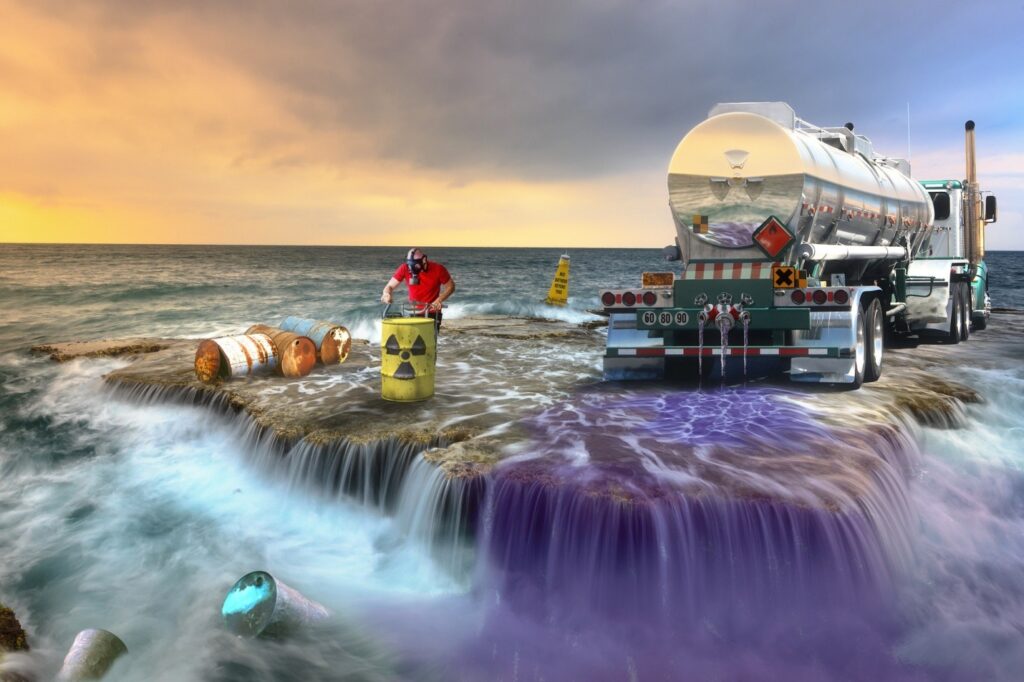Our Reclaim Waste PDFs
Our Reclaim Waste PDFs
Blog Article
Some Known Incorrect Statements About Reclaim Waste
Table of ContentsRumored Buzz on Reclaim WasteLittle Known Questions About Reclaim Waste.Excitement About Reclaim WasteThe Reclaim Waste IdeasThe Ultimate Guide To Reclaim Waste
Domestic sewer waste refers to the waste and products from a residential septic tank. The appropriate administration and disposal of domestic sewage waste need fluid waste to be transferred to a sewer therapy plant where the appropriate approaches and tools are applied to cleanse and dispose of waste.
Business waste commonly consists of prospective threats, such as flammable products or a mixture of liquid and strong waste products, and requires an advanced and detailed disposal procedure. The disposal of industrial waste typically includes the purification of waste before transportation to guarantee secure and appropriate disposal. Hazardous waste is developed from by-products and runoff of commercial procedures and manufacturing.
This sort of waste can not use the same sewer administration transport or processes as septic or business fluids. The commercial waste monitoring procedure requires the evaluation and screening of fluid waste prior to it undergoes the disposal process (liquid waste removal melbourne). Overflow waste is the liquid waste that comes from overflow and excess stormwater in extremely inhabited locations or cities
Runoff waste can cause contamination and flooding if not dealt with appropriately. Making certain proper waste management can prevent calamities and minimize ecological harm.
Reclaim Waste for Dummies
Contact PROS Providers today to discover our waste monitoring and disposal solutions and the proper methods to look after the liquid waste you generate.
(http://tupalo.com/en/users/7813759)Do you recognize what occurs to your water when you draw the plug, flush the bathroom or drain pipes the cleaning machine? No? Well, it deserves understanding. This supposed 'wastewater' is not only a vital source but, after therapy, will be launched to our land, waterways or the sea. Used water from commodes, showers, baths, kitchen area sinks, washings and commercial processes is recognized as wastewater.

water utilized to cool down machinery or tidy plant and equipment). Stormwater, a type of wastewater, is runoff that moves from agricultural and city locations such as roof coverings, parks, yards, roads, courses and rain gutters into stormwater drains pipes, after rainfall. Stormwater streams neglected straight to neighborhood creeks or rivers, eventually reaching the sea.
The 2-Minute Rule for Reclaim Waste
In Queensland, a lot of wastewater is dealt with at sewer therapy plants. Wastewater is transferred from domestic or industrial sites with a system of drains and pump stations, called sewerage reticulation, to a sewage treatment plant. Local governments build, preserve and operate most sewage treatment plants. Operators are licensed under the Environmental Management Act 1994 to release treated wastewater at an appropriate ecological criterion right into rivers.
The Division of Natural Resources encourages regional governments about managing, operating and maintaining sewage systems and therapy plants. In unsewered areas, city governments might need householders to mount specific or home sewage therapy systems to treat domestic wastewater from commodes, kitchen areas, restrooms and washings. The Division of Natural Resources authorises using family systems when they are shown to be reliable.
A lot of stormwater receives no therapy. In some new neighborhoods, therapy of some stormwater to eliminate litter, sand and crushed rock has actually begun using gross pollutant catches. Wastewater treatment takes place in 4 stages: Gets rid of solid issue. Larger solids, such as plastics and various other items wrongly released to sewers, are gotten rid of when wastewater is travelled through screens.
Makes use of small living microorganisms recognizes as micro-organisms to damage down and eliminate continuing to be liquified wastes and fine bits. Micro-organisms and wastes are included in the sludge.
Getting My Reclaim Waste To Work
Nutrient removal is not readily available at all sewer treatment plants because it requires pricey specialized devices. Clear liquid effluent produced after therapy may still have disease-causing micro-organisms - liquid waste disposal melbourne.

The majority of wastewater streams into the sewage system. Under the Act, local federal governments administer authorizations and licences for eco relevant tasks (ERAs) entailing websites wastewater releases that may have a local effect.
Getting My Reclaim Waste To Work
Otherwise, examples are considered lab evaluation. Frequently lots of examinations are required to develop the levels of each of the different pollutants such as oils, heavy metals and chemicals in water. Tracking supplies valid details concerning water quality and can confirm that licence conditions are being met. The information acquired through tracking supplies the basis for making water high quality choices.
Report this page